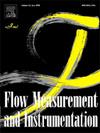Anti-wear and anti-cavitation structure optimization of V-type regulating ball valve in the coal chemical industry
IF 2.3
3区 工程技术
Q2 ENGINEERING, MECHANICAL
引用次数: 0
Abstract
Aiming at the erosion wear-cavitation phenomenon of the V-type regulating ball valves in the coal chemical industry during the transportation of black water medium, which leads to sealing failures and induces flow-induced vibration issues. It is proposed to add diffusion baffles inside the sphere to transfer the erosion, while the rear valve seat adopts staggered diffusion holes to reduce the throttling cavitation effect, and the optimization scheme is verified through numerical simulations and experimental testing. The research indicates that the optimization model can cause the local jet at the throttling section to diffuse and decelerate, weakening the formation of high-speed jet flow within the sphere's flow channel. Additionally, the optimization model transfers the erosion in the sphere's upstream area to the baffle, and reduces the kinetic energy of particle collisions through the baffle's diffusion effect, thereby reducing the erosion wear on the rear valve seat and the valve sealing pair. Through quantitative analysis, the average wear rate of the optimization model's components is 30 % of the original model. Additionally, the optimization model effectively suppresses the vapor-liquid phase change within the valve, thereby weakening the flow cavitation phenomenon in the valve, and the vapor volume fraction and cavitation distribution range in the fluid domain are significantly reduced. Furthermore, the pressure pulsation coefficient in the fluid domain of the optimization model significantly decreases and exhibits periodic fluctuations, with reduced amplitude and frequency range of large-amplitude pressure pulsations, which helps to avoid the flow-induced resonance phenomenon between the valve and the liquid flow system. Experimental verification shows that the quality loss and erosion rate of the optimization model are both lower than the original model, indicating that the optimization scheme can reduce wear and suppress cavitation, thereby prolonging the valve service life.
煤化工行业 V 型调节球阀的抗磨损和防气蚀结构优化
针对煤化工行业V型调节球阀在输送黑水介质过程中出现的冲蚀磨损气蚀现象,导致密封失效并诱发流动诱发振动问题。提出在球体内部增加扩散挡板来转移冲蚀,后阀座采用交错扩散孔来降低节流空化效应,并通过数值模拟和实验测试验证了优化方案。研究表明,优化模型可使节流段的局部射流扩散减速,削弱球体流道内高速射流的形成。此外,优化模型还能将球体上游区域的冲蚀转移到挡板上,并通过挡板的扩散效应降低颗粒碰撞的动能,从而减少后阀座和阀门密封副的冲蚀磨损。通过定量分析,优化模型部件的平均磨损率是原始模型的 30%。此外,优化模型还有效抑制了阀门内的汽液相变,从而减弱了阀门内的流动气蚀现象,流体域内的蒸汽体积分数和气蚀分布范围显著减小。此外,优化模型流体域内的压力脉动系数明显降低,并呈现周期性波动,大振幅压力脉动的振幅和频率范围减小,有助于避免阀门与液流系统之间因流动引起的共振现象。实验验证表明,优化模型的质量损失和冲蚀率均低于原始模型,表明优化方案可以减少磨损和抑制气蚀,从而延长阀门的使用寿命。
本文章由计算机程序翻译,如有差异,请以英文原文为准。
求助全文
约1分钟内获得全文
求助全文
来源期刊

Flow Measurement and Instrumentation
工程技术-工程:机械
CiteScore
4.30
自引率
13.60%
发文量
123
审稿时长
6 months
期刊介绍:
Flow Measurement and Instrumentation is dedicated to disseminating the latest research results on all aspects of flow measurement, in both closed conduits and open channels. The design of flow measurement systems involves a wide variety of multidisciplinary activities including modelling the flow sensor, the fluid flow and the sensor/fluid interactions through the use of computation techniques; the development of advanced transducer systems and their associated signal processing and the laboratory and field assessment of the overall system under ideal and disturbed conditions.
FMI is the essential forum for critical information exchange, and contributions are particularly encouraged in the following areas of interest:
Modelling: the application of mathematical and computational modelling to the interaction of fluid dynamics with flowmeters, including flowmeter behaviour, improved flowmeter design and installation problems. Application of CAD/CAE techniques to flowmeter modelling are eligible.
Design and development: the detailed design of the flowmeter head and/or signal processing aspects of novel flowmeters. Emphasis is given to papers identifying new sensor configurations, multisensor flow measurement systems, non-intrusive flow metering techniques and the application of microelectronic techniques in smart or intelligent systems.
Calibration techniques: including descriptions of new or existing calibration facilities and techniques, calibration data from different flowmeter types, and calibration intercomparison data from different laboratories.
Installation effect data: dealing with the effects of non-ideal flow conditions on flowmeters. Papers combining a theoretical understanding of flowmeter behaviour with experimental work are particularly welcome.
 求助内容:
求助内容: 应助结果提醒方式:
应助结果提醒方式:


